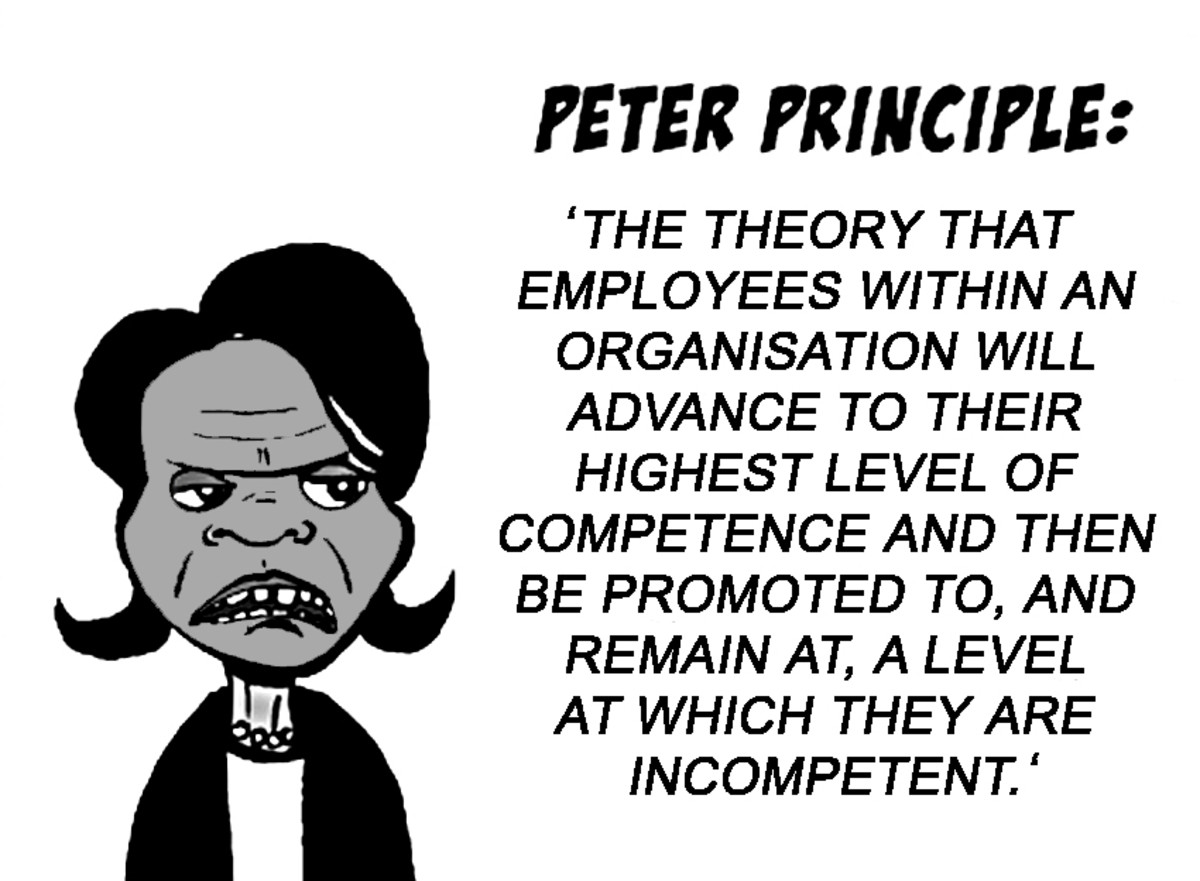Recruiting and Retaining a Dynamic Workforce

Motivational Strategies for Creating a Dynamic Workforce
I remember several years ago, sitting in a lecture by a motivational speaker whose job it was to help employers attract and retain quality. He said, “There are plenty of great employees out there. They just don’t currently work for you.” The organization I worked for had plenty of long-term quality employees, especially at the middle, senior and executive levels of management. It was the recruitment and retention of line staff that we were struggling with. Paraprofessionals make a much more meager wage, deal with some of the most unpleasant aspects of operations, and are heavily recruited to other employers. If your employees do not feel valued or as if they are making a personal contribution in your workplace, they are likely to head to the organization down the block for a quarter more per hour. Sad, but true.
If you ask most employees what motivates them to perform to their highest potential, the answers may surprise you. We all want to make a good wage, but that isn’t the highest motivator. Employees want to be respected. They want to be valued and to have their input not only solicited, but heard. They want to feel as if the contributions they are making to your organization are valued. And why shouldn’t they be? It is often times the employees at the lower echelons of your business that have the most insightful ideas. After all, they are the ones that are closest to the customers on a daily basis. They hear more about what customers like and dislike about your business. They likely use the products and services your agency offers more regularly than management and formulate ideas about how to improve upon such products. Their ideas may be formulated and communicated at a more basic level, but that’s where the good ideas start.
It is up to management to build the bridge between the paraprofessional employee and management itself. For without that bridge, successful communication will not be able to take place. Employees who are not valued and encouraged to communicate with management will not care enough about their jobs or your products to bother formulating innovative ideas, let alone share those ideas with you. Employees who have ideas that they do not choose to share, or do not feel as if they are welcomed to share, will become the employees that complain about your products and services, share their ideas with one another, and grouse about how management doesn’t listen or care about quality improvement. They are also the employees that will eventually migrate to your competitors, and they will take their wonderful ideas with them.
So the first lesson of employee motivation is to VALUE your employee. This is more than a word. It must become a culture, and there are steps that you can take to instill such a culture in your organization. Consider the following ideas:
- Measuring Satisfaction: Implement employee satisfaction surveys on a regular basis. This might be annually or biannually. Using a 1-5 scale, ask employees to rate their satisfaction on a variety of issues such as the approachability of management, the safety of the workplace, whether or not they feel respected or that their opinions and ideas are valued. Ask them to rate the pay scale and benefit packages. Then be sure to leave a lot of room for narrative that will allow them to elaborate on their answers and share ideas that can help management to work toward improvement of the workplace environment.
- Live Your Mission, Vision and Values. Many organizations have mission, vision and values statements, but I haven’t worked in too many that actually take those statements to heart and keep them at the forefront of their operations. Your values statements in particular, should include language about how you honor your workforce and should be prominently displayed within your organization including on posters, business cards, newsletters, websites, and in employee handbooks and training materials.
- Solicit Ideas: Institute brown bag lunches or other forums for team meetings at which you encourage employees from every level of the organization to come together and brainstorm ideas for quality or product improvement. Be sure that management does not monopolize the conversation and does not spend time correcting or refuting the ideas of non-management staff. Brainstorming is for throwing out ideas, not picking them apart. That comes later.
- Incentivize: Offer incentives to employees for sharing ideas that lead to new business plans or product improvement initiatives and be sure that you publicize the winners.
- Recognize Outstanding Performance: Adopt an Employee of the Month (or quarter) program and allow employees and customers to vote. Winners should be provided with an award and should be prominently identified on a plaque in your lobby. You might also consider highlighting the employee and their background in your company newsletter or with a small ad in the local paper.
- Form Committees: If management identifies a problem within the organization, create a task force of paraprofessional employees and charge them with working on a proposed solution.
- Non-Discrimination: Strive to create a diverse and dynamic workforce by recruiting persons from a variety of racial and ethnic backgrounds, of both genders and different sexual orientations and religious affiliations. Have a strong non-discrimination policy and enforce it fairly and uniformly.
- Continuing Education: Ensure that continuing education opportunities are available to every employee, not just management. This not only demonstrates a commitment to each employee but also improves upon their skills, leading to greater job performance that will strengthen the organization. I worked for a large non-profit organization that spent much money annually on continuing education. Every employee could take classes for which they received tuition reimbursement up to a set amount annually. This was great, but it was only management that was sent to regional and national conferences. When I became a manager, I changed that by instituting a policy for my employees that established clear guidelines for performance that if met, would qualify paraprofessional staff for these trips as well. I budgeted enough money each year to send two employees who met the established criteria, to the conferences. They weren’t going for CEUs, they were going to acquire or enhance the skills that would lead to greater job performance. It was a wildly successful idea that led to drastically improved attendance and performance by employees that wanted to qualify for the all-expense paid trips. In an industry that typically experienced 60-120% employee turnover, my facility’s turnover rate never reached 5%! That was outstanding!
- Establish Clear and Concise Guidelines: Employees will be more successful if they have the proper tools to achieve success. Those tools include clear and concise guidelines about job performance and expectations. Such information should be provided in writing at the time of hire and be reinforced during a comprehensive orientation and training program. Job descriptions should be written and kept up-to-date for every position within your organization. Employees themselves may participate in updating of such descriptions by being asked to review them and offer insight into which duties they perform and which they do not.
- Market Studies and Benchmarking: Human Resources should conduct annual or biannual market studies to track wage and benefit trends and create ongoing plans to remain competitive within the marketplace. This does not mean that you have to remain at the top of the heap. Remember, money is not the greatest motivating factor. It is important, hence remaining competitive is crucial, but if your organization truly values employees, and is able to demonstrate that through best business practices, you can still retain employees even if a competitor pays slightly more.
- Be Available: If you have shift workers, be sure that upper management is equally accessible to all employees. You may work a standard 9 to 5 day, but at times, you will need to have a presence on your pm and night shifts. Have meetings on those shifts, throw those shifts the occasional pizza party and when it is time for personnel reviews, conduct them on the applicable shift.
- Personnel Reviews: Speaking of personnel reviews, each organization must assure that they are conducting regular reviews with each employee at every level of the organization. The 360 review is a great tool to use. This tool allows the employee and supervisor to evaluate performance, and also involves reviews from peers and others within the organization. The employee and supervisor use all feedback to establish clear and concise goals for the coming year. I would recommend reviews for new employees at the 30 and 90 day marks, as well as at six months and at the time of the first year anniversary. For all longer term employees, a review should be conducted annually. You should do it more often for employees that have been given extended probation, or are having performance issues and need extra support.
- Successful Corrective Action Plans: Be sure to engage employees in their corrective action plans. It is never wise for a manager to dictate the measures that an employee should take to improve their performance. The manager should focus more on their own efforts to mentor the employee while asking the employee what they think they can do personally to improve upon their own performance. This makes it easier to hold them accountable for achieving these performance goals. It is the role of the manager to clearly inform an employee in what areas they need improvement, but while the manager can participate in establishing action steps, it should be the employee themselves that makes the determination of what the final action steps should be.
- Create a Fun Culture: It is important that your organization create a culture in which work is fun. As such, employees won’t dread getting out of bed to come to work and will be motivated to perform because they are filled with positive energy and really want to keep their jobs. Fun may include company picnics and holiday parties. It might also include summer cookouts during the lunch hour, offering yoga or Pilates classes for employees, surprising employees with pizza or sub parties, having prize drawings for those that attend staff meetings, etc.
- Employee Planned Recognition Events/ Strategies: You might consider establishing an employee recognition committee, giving them a set budget, and allowing them to plan their own special events. This will make them feel empowered and involve them in creating the culture that is most meaningful to them.
- Employee Programs and Support: Your Human Resources department may also establish certain practices designed to keep employees healthy and happy. Such ideas might include support groups, Employee Assistance Programs, wellness programs, advance against wages policies, mentorship programs, and career ladders.
- Career Ladders: Having an established career ladder for employees is a great motivational idea. Most employees feel trapped in dead-end jobs when they know there is no room for advancement. And not all employees are college educated, but that doesn’t mean they aren’t worthy of advancement. Career ladders are designed to honor the contributions of employees who make physical and /or intellectual contributions to the success of the organization. Those that have excellent attendance, attitudes and performance should be rewarded with opportunities to receive more responsibility at a greater rate of pay. That way, there is always something to strive for within your organization and employees won’t feel the need to go elsewhere for recognition and advancement.
- Recognize Special Days: Recognize birthdays and professional anniversaries. This information becomes available via employment applications and using date of hire. Giving each employee a card for these special events reinforces the fact that you care about each of them and honor their commitment to your business. You must keep meticulous records and have a highly organized HR department or manager to keep track of these dates and assure that no one is forgotten.
- Equality is Key: Have policies in place to assure that management and non-management staff are treated alike. That means holding members of the management team equally accountable for missteps and poor decisions as you would any non-management staff. If staff feel that equal treatment is not being given, your organization will lack credibility.
I’m sure you have many ideas of your own, but the preceding ideas were designed to give you a place to start creating your own dynamic, successful workforce. Best of luck!
Check out these great business hubs...
- Diversification of your Workforce
What is Diversity? The word diversity gets used a lot, and over time, I believe its impact has become watered down. Diversity has become a buzz-word that for most businesses, seems to suggest that... - Grant Writing Tips
Grant Writing Tips Identify Your Sources In order to have the greatest chance for success in obtaining grants, you must first identify potential grant agencies. There are many agencies that provide... - Strategic Planning for Grassroots Non-Profits
Strategic Planning for Grassroots Non-Profits The creation of viable strategic plans is a critical function for any organization. The strategic planning process creates a continual way for any organization...
Rate this Hub
© 2010 Jaynie2000








